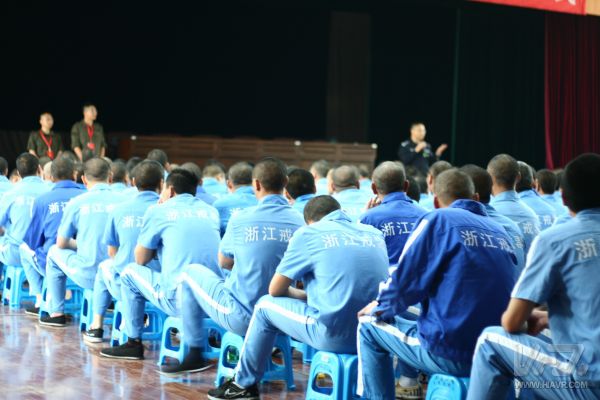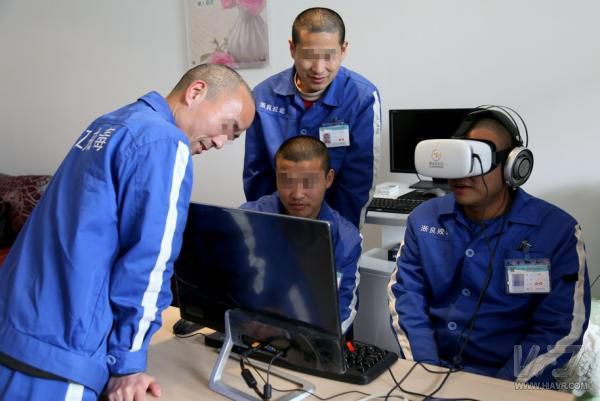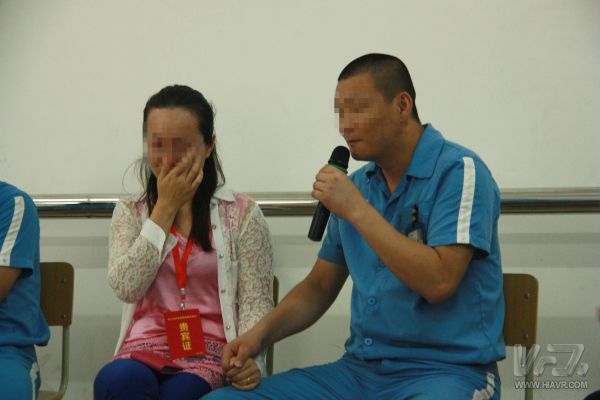In the dim memory of the Liangzhu Detoxification Center in Zhejiang Province, there's a vivid image that lingers: standing before the massive rehabilitation training facility, with its clean, smooth walls and the iconic "Yu-Yu Long" structure, a powerful symbol of the Liangzhu Cultural Heritage. The solemn, four-character inscription "Good and Evil Detoxification" stands tall, evoking a sense of grandeur and determination.
Looking into the distance, there's a green football field where people play basketball and practice Tai Chi. It felt like stepping back into a university campus. At that moment, I thought, if I hadn’t come here for treatment, I would have loved this place.

As the iron gate behind me slowly closed, I was pulled back to reality. During my time in the ward, I felt lost and depressed every day. Even after a month of strict barracks-like training, my resistance remained strong, and I still struggled to adapt.
At that point, I was introduced to VR technology.
VR, short for Virtual Reality, is an immersive 360-degree projection system that allows users to experience virtual environments as if they were real. I never expected that the Liangzhu Drug Addiction Treatment Center had invested heavily in this cutting-edge global technology, integrating it into their educational correction and assessment system to help individuals overcome addiction.
The principle is simple yet powerful: by simulating the negative consequences of drug use—such as physical deterioration, health decline, and emotional trauma—VR helps users internalize the dangers of drugs. This process stimulates the brain’s neural pathways, altering the hippocampus’ memory structures, and creating a deep subconscious aversion to drugs, ultimately supporting detoxification.

Despite my stubbornness, I found myself hoping that this machine could help me quit. Could just watching images really cure my addiction? I wasn’t sure, but my commanding officer advised me to “give it a try.â€
Reluctantly, I joined the others at the Education Correction Center. At first, it didn’t seem to do much—just reenactments of drug use scenarios. But as the treatment progressed, more realistic scenes emerged: the painful symptoms of drug abuse, such as skin ulcers and severe health issues. I was shocked and even started sweating from fear. Then came the scenes of crying relatives and abandoned friends, which left me completely paralyzed. The images stirred something deep inside me, awakening my conscience. I blushed, lowered my head, and fell silent.

Through VR therapy, my mindset gradually shifted, and the detoxification process became less daunting. Later, I participated in group psychological counseling sessions, which helped me gain a new perspective on myself. With the support of the training program designed by Officer Yang Jun from the Rehabilitation Training Center, I was also exposed to traditional Chinese culture through lessons taught by the center’s educators. Slowly, I began to emerge from the fog, regaining energy and purpose.
What was once ignorance, blindness, and recklessness has now become a distant memory. Today, I understand that a good life must be created by oneself. I’m still young, and I won’t let drugs destroy my future. I will use strong perseverance to fight against the addiction and strive to return to a normal life.
This article was written by Lu Yong, a detoxification officer at the compulsory isolation drug treatment center in Liangzhu, Zhejiang Province. For more updates on VR and AR technologies, follow the official WeChat account “VR Platform.â€

Silicone Rubber Keypad,Rubber Keypad ,Silicone Keymats,Rubber Key Pad
CIXI MEMBRANE SWITCH FACTORY , https://www.cnjunma.com